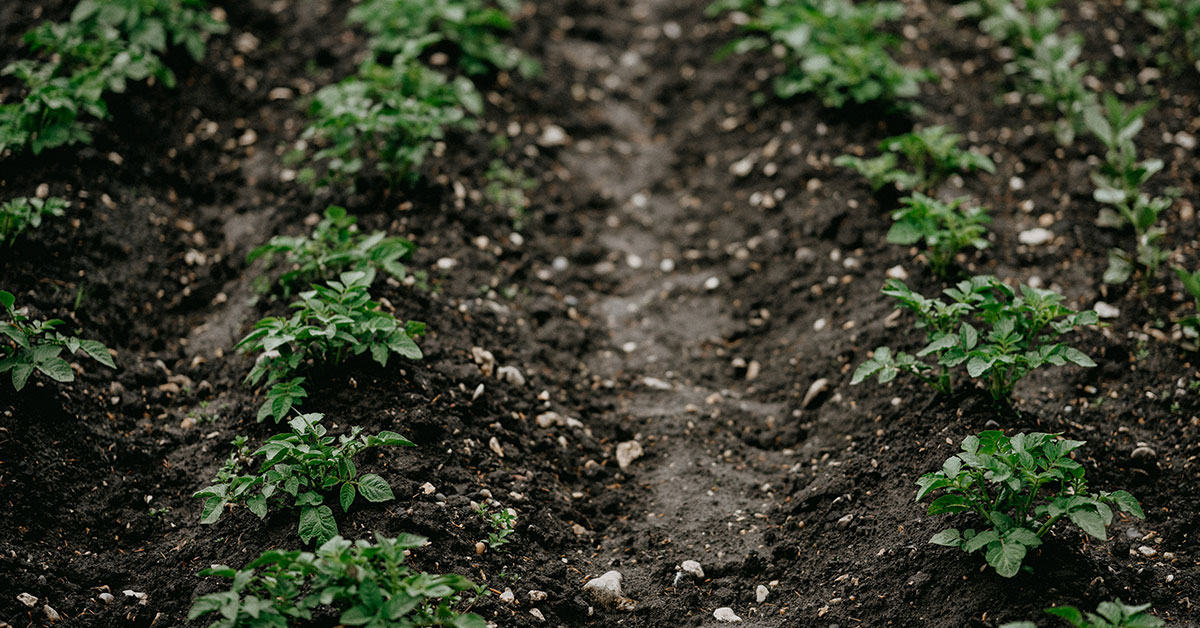Growing potatoes in zone 2 can be a bit tricky due to the extreme cold temperatures and short growing season. It is important to select varieties that are specifically bred for cold climates, such as those with shorter maturity times. In this article, we’ll do a deep dive on how to grow potatoes in zone 2. With a bit of care and patience, you can have a successful crop of potatoes in zone 2.
USDA Hardiness Zone 2 Climate
Zone 2 has a cold climates with long and cold winters and short, cool summers. Zone 2 is located in the northernmost parts of the United States and Canada, and includes almost all of Alaska and parts of northern Canada.
The average last frost date for Zone 2 is usually around May 22nd, and the average first frost date is around September 1st. This leaves only 102 days in your growing season. The average annual temperature for Zone 2 ranges from -10°F to 40°F, with an average high of 60°F in the summer and an average low of -20°F in the winter.
The Best Seed Potatoes For Zone 2
When selecting seed potatoes for growing in Zone 2, it is important to be mindful of the variety’s days to harvest and the length of time you have before you want to harvest them.
Early-season varieties such as ‘Yukon Gold’ and ‘Red Norland’ have fewer days to harvest and should be planted as soon as possible for harvesting in late summer. These are going to be the best variety of potatoes to grow, as the growing season in zone 2 is only 102 days.
Mid-season varieties such as ‘Russet Burbank’ and ‘Kennebec’ have more days to harvest and should be planted in late April or early May for harvesting in fall.
Late-season varieties such as ‘Cara Russet’ and ‘All Blue’ have the most days to harvest and should be planted in late April or early May for harvesting in early winter. Be sure to select varieties with the right number of days to harvest for your intended harvest date. Some good potato varieties for zone 2 include:
- Russet Potatoes: 85-95 days
- Yukon Gold Potatoes: 90-110 days
- Red Potatoes: 80-90 days
- Purple Potatoes: 90-110 days
- Fingerling Potatoes: 90-120 days
- Sweet Potatoes: 90-120 days
- White Potatoes: 90-100 days
- All-Blue Potatoes: 95-105 days
- Yellow Finn Potatoes: 85-95 days
- Kennebec Potatoes: 85-95 days
When To Plant Potatoes In Zone 2
In zone 2, potatoes should be planted two weeks before the final frost date. This date is typically around May 22nd, so potatoes should be planted around the first week of May. Planting potatoes at this time will give them enough time to grow and mature before the colder temperatures of winter arrive.
Planting potatoes early in the spring also helps to avoid the risk of late blight, which can be a problem if potatoes are planted too late in the season. Be sure to choose a variety of potato that is suitable for your climate and soil type, and always use certified disease-free seed potatoes.
How To Plant Potatoes In Zone 2
To plant seed potatoes, begin by preparing the soil for planting. This can be done by tilling the soil to a depth of approximately 8 inches and adding organic compost to the soil. Once the soil is ready, place the seed potatoes in a sunny location that receives at least 8 hours of direct sunlight.
The seed potatoes should be planted with the “eyes” facing up and should be spaced approximately 8 to 10 inches apart. Cover the seed potatoes with 3-4 inches of soil, and water them well. Once the potatoes begin to sprout, add more soil to the rows to ensure that the potatoes are well covered.
Water the potatoes regularly and keep the area free of weeds.
Caring For Potato Plants
Caring for potato plants is pretty easy – they’re incredibly hardy and generally no-fuss. Potato plants need full sun and well-drained soil to thrive. They should be watered deeply and regularly, allowing the soil to dry out between waterings.
Fertilizing is also important for optimal growth. Potato plants need a balanced fertilizer with equal parts nitrogen, phosphorus, and potassium. This should be applied every four to six weeks, depending on the soil’s nutrient content.
It is also important to keep the soil evenly moist, as potatoes do not tolerate dry or waterlogged conditions. Mulching around the potato plants can help retain moisture and reduce weeds.
When To Harvest Potatoes In Zone 2
There are two sure ways to know your potatoes are about ready to harvest! The first is counting backward from your current date to their planting date. Potato varieties have an approximate number of days to harvest, so consult the days to harvest for the particular variety of potatoes you’ve planted. If you aren’t sure, assume it’s around 100 days.
The appearance of your potato plants is another dead giveaway. You will know your potatoes are ready to harvest when the foliage begins to turn yellow and die back. Allow the soil around the plants to dry before harvesting, but don’t allow it to be dry for too long. Once harvested, inspect the potatoes carefully- they should be firm and free of green or soft spots.













